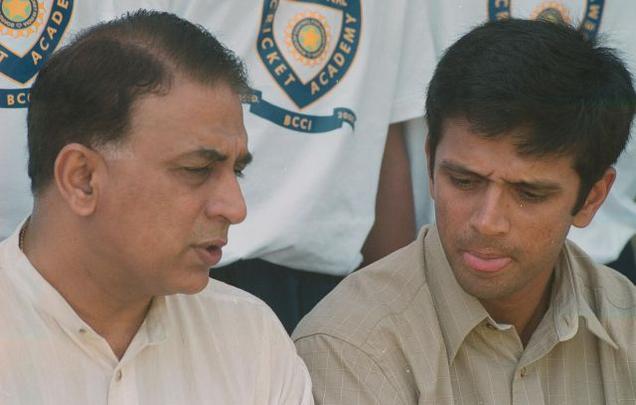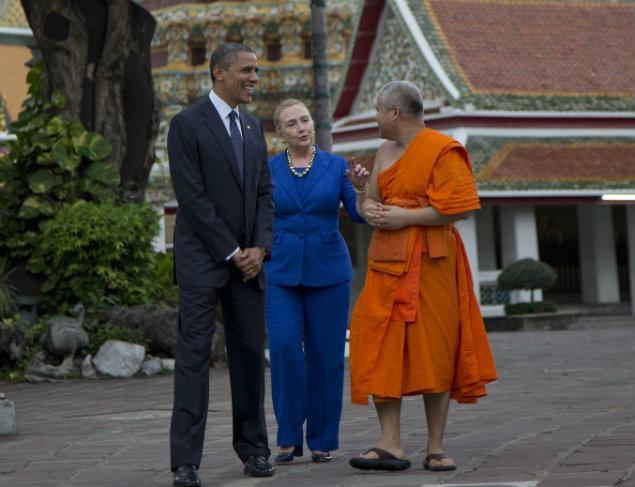November 12, 2013

With their copybook batting techniques, Sunil Gavaskar and Rahul Dravid ground out the opposition pace attack when travelling overseas. While Gavaskar played without a helmet even against the feared West Indian attack of the 70s, Dravid blunted England’s bowlers with great aplomb.
November 12, 2013

With their copybook batting techniques, Sunil Gavaskar and Rahul Dravid ground out the opposition pace attack when travelling overseas. While Gavaskar played without a helmet even against the feared West Indian attack of the 70s, Dravid blunted England’s bowlers with great aplomb.
Who is the greatest among the three giants — Sunil Gavaskar, Rahul Dravid and Sachin Tendulkar — on foreign soil?
All three were exceptional back-foot players, a pre-requisite for succeeding abroad.
Gavaskar was classically side-on. Former West Indian pace bowling great Andy Roberts told this writer in the Caribbean that Gavaskar, in fact, was a better player of short-pitched bowling than Tendulkar.
Gavaskar batted in an era — the 70s and the 80s — when the pitches outside India were decidedly greener and quicker, the surfaces were often uncovered and the helmet, till the second half of the 70s, had largely not made an appearance.
Eyes on the ball
The opener kept his eyes on the ball as he swayed away from the line of the fliers while Tendulkar, on occasions, ducked into the lifter or was opened up. Remember, Gavaskar never wore a helmet and only, late in his career, sported the skull cap.
This explains why Gavaskar was rarely struck on the body by a short-pitched delivery, while Tendulkar received a number of blows on his frame during his blood and guts career.
Sunny’s side-on excellence also meant he was a better player of left-arm spin than Tendulkar.
Top-hand grip
Gavaskar’s top-hand grip, ideal for driving and all-round stroke-play, gave him an edge over Tendulkar, who possessed more of a bottom-handed grip. This, ideally, should have limited Tendulkar’s stroke-play on the off-side.
But then, Tendulkar made up for this shortcoming with his keen eye, which enabled him to pick the length in a jiffy, subtle positioning of the feet to create space and timing to penetrate the off-side field.
Gavaskar’s 101 on a buzzing, greenish track at Manchester in 1974 coping with pacemen Bob Willis, Chris Old, and Mike Hendrick and the left-arm spin of Derek Underwood, captured the essence of his high-skilled batsmanship.
Coming up short
How did Gavaskar fare against the most threatening attacks of his time? Gavaskar’s deeds in the West Indies are phenomenal but when he was up against the menacing four-pronged attack of Roberts, Joel Garner, Malcolm Marshall and Michael Holding in 1983 (the foremost pace pack faced by any Indian line-up in Test cricket), this formidable batsman came up short.
Gavaskar notched up just 240 runs in five Tests at 30.00 with an unbeaten 147 in a truncated rain-affected match in Georgetown.
The little master’s record does get bruised here.
In contrast, he was terrific against the speed, cut and swing of Imran Khan and Sarfraz Nawaz, and leg-spinner Abdul Quadir’s wily ways while soaking up pressure in Pakistan, in 1978 and ’82.
The champion opener produced a stunning run of 113 at Brisbane, 127 (Perth) and 118 (Melbourne) in successive Tests in 1977, countering the fast and furious Jeff Thomson on lively tracks down under. Yet, save Thomson, that was a second-string Aussie attack.
Against the most incisive Aussie pace pack of the time in Lillee, Rodney Hogg and Len Pascoe down under in 1980-81, Gavaskar came out second best with 118 runs in three Tests at 19.66.
Outstanding technician
Another outstanding technician, Dravid has more match-winning efforts abroad than both Gavaskar and Tendulkar. His 148 at Leeds facing off against Matthew Hoggard, Andy Caddick and Andrew Flintoff under a cloud cover in 2002 was influential.
Then, his mammoth 233 and 72 not out at Adelaide in 2003 were Test-clinching efforts. And Dravid’s epic 270 at Multan in 2004 was a series-winning innings.
A sound back-foot player — like Gavaskar and Tendulkar — Dravid presented a beautiful sight when he rose on his toes and keep the lifter down with a vertical blade and soft hands.
Perhaps there was a chink in his armour in how his high back-lift came down at an angle — a paceman bowling from wide of the crease and getting the ball to straighten from an uppish length on the off-stump had an opportunity to castle him — but Dravid often made subtle changes in his stance and bat swing to counter this.
Forgettable stats
Dravid’s 624 runs in 11 Tests at 29.71 in South Africa leaves much to be desired though. Similarly, Dravid’s figures against the best Australian attack faced by India during his time down under in 1999 — against Glenn McGrath, Damien Fleming, Brett Lee and Shane Warne — when he averaged just 15.50 are the kind he would like to forget.
While Gavaskar and Dravid built lasting edifices abroad by grinding the bowling, Tendulkar could do the same even as he dominated the attacks with a still head, balance and inventiveness.
This gifted batsman was inspirational, had two strokes for every delivery, impacted the psyche of the bowler, had the most complete record on all surfaces.
He might not have as many match-winning innings as Dravid but you cannot hold that against him — winning depends on a lot of factors and a batsman alone cannot be penalised.
Symbolic of Tendulkar’s dominance was a breath-taking 169 of cuts, pulls and back-foot punches in Cape Town, 1997, against a high-quality pace attacked spearheaded by Donald.
The roles of Gavaskar and Dravid (top-order batsmen) and Tendulkar (at No. 4) were different. Everything considered though, the vote has to go to Tendulkar.
Courtesy: The Hindu












































































































